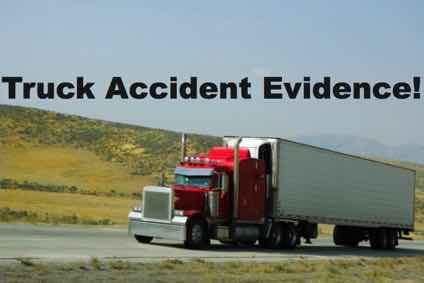
 Request FREE consultation - 1866-758-4529
Request FREE consultation - 1866-758-4529 
In an accident involving a tractor-trailer or other commercial truck, gathering the right evidence is crucial to winning a truck accident case.

Professional truck drivers must obtain a commercial driver’s license and are employed by a “motor carrier” that must comply with safety laws designed to protect us. These safety rules are the Federal Motor Carrier Safety Regulations. Some of the rules relate to the driving of the vehicle, some of the training and qualifications of the drivers, others refer to the hours the trucker can work, and finally, the condition of the truck. The following are some of the methods used by top 18-wheeler accident lawyers to get evidence to win truck accident cases.
Recently, the Department of Transportation has enacted rules regarding electronic logging devices, which are used to track safety compliance, such as hours of service. These new electronic logging devices replace the old paper logs, which are easily falsified.
Obtaining the electronic logging device data before the data is lost or destroyed is an important step in any serious injury or wrongful death truck accident case.
The majority of trucks on the road today come equipped with computer crash data, often referred to as the “black box,” which contains vital information such as the truck’s speed, brake application, and other relevant evidence.
Obtaining the maintenance records for the tractor or trailer is essential whenever the condition of the vehicle may be an issue in the case. Trucking companies are notorious for ignoring safety items and general maintenance of a semi-truck. Whenever the condition of the brakes or other safety features may be an issue, obtaining the maintenance records is mandatory.
Trucking companies are required to maintain a driver qualification file for each of their truck drivers, containing evidence of compliance with or failure to comply with the safety rules. Further, the qualification file can be particularly damaging to the company when the truck driver is not qualified or improperly trained to operate the big rig.
Increasingly, we are finding that trucking companies have installed video cameras in their trucks. Mainly, larger trucking companies are utilizing video camera technology to have a safer fleet and also to prevent frivolous claims. Nevertheless, in many of our cases, the video evidence prevents the truck driver from denying the facts.
The old saying that a picture is worth a thousand words is often very accurate. A video showing what happened in the accident saves the victim or their family a lot of words in a truck accident lawsuit. Local businesses frequently utilize video surveillance to ensure the safety of their premises. Obtaining video evidence, if it exists, from local businesses or homes in the vicinity of the crash can make or break a case.
Most people injured in the 18-wheeler accident are not able to gather the names and phone numbers of witnesses who may have seen the crash. Whether being transported by ambulance or otherwise unable to obtain witness names, identification is crucial for obtaining important testimony regarding what happened.
911 tapes can be subpoenaed and almost always contain the caller’s name and phone number. Making Freedom of Information Requests is also used by leading attorneys. Unfortunately, most of the time, the crash report itself will not list critical witnesses other than the parties themselves. The importance of obtaining the necessary information about who may have seen the crash cannot be overstated.
Running reports about the truck drivers involved in an accident can be a fruitful source of information. Unfortunately, many truck drivers alter their account of what happened in the crash to avoid the truth from harming them. The motivations can be various, from protecting their commercial driver’s license to being coached to see the accident differently. In such cases, the driver’s credibility becomes a vital part of the case.
Call our top-rated truck accident attorneys in Texas for a FREE Case Evaluation.
Call (281) 893-0760
Related Resources:
Evidence That Should be Collected to Win a Truck Accident Case
How do I File a Claim After a Truck Accident?
What are the Most Common Causes of Truck Accidents?
How do Truck Drivers Log Their Driving Time?